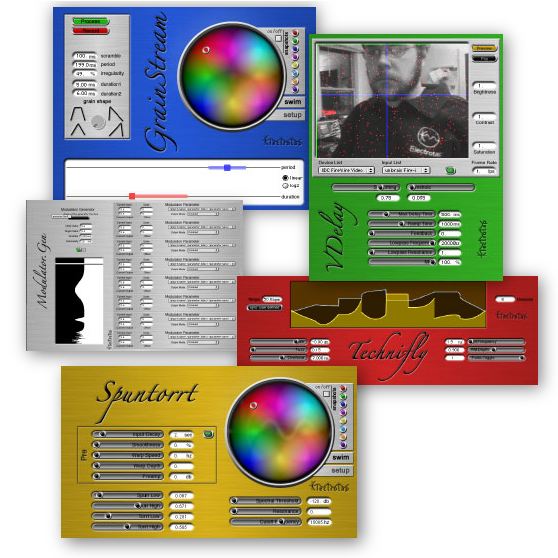Cycling ’74 has released a new collection of plug-ins I’ve been eagerly anticipating, developed by a team from Electrotap. These aren’t your run-of-the-mill audio effects and virtual instrument: think spectral and granular sound, wild filter/delay stuff, morphing color-palette interfaces, and input from gamepads and webcams:
US$199 for a whole mess of plug-ins; works with everything. (Mac RTAS/VST/AU, Windows RTAS/VST.) More after the jump.

The challenge of developing Hipno was, with so many far-out sonic possibilities, how could you navigate different sounds to find the one you want? The main answer is the Hipnoscope, a color-palette circular orb through which you can explore different sounds and even morph through presets. (Yep, it’s MIDI-assignable.) It’s very Kai Krause-esque interface design. (Anyone here remember Kai’s Power Tools, the Photoshop plug-ins?)
Of course, here at CDM we’re always into alternative interfaces, and it’s great to see them making their way into a commercial product. Several of the plug-ins can be modulated or controlled with a webcam input, using motion tracking or motion detection. There’s even a modulator that uses a USB game pad.
The best feature by far, though, isn’t avant-garde at all. Hipno has XML import/export of presets, so you can switch hosts without losing your presets, and you can share your brilliant sound design work. The demo I saw at AES had Hipno loaded in Ableton Live 5’s new preset browser, and everything appeared perfectly sorted.
I can’t wait to get my hands on it, if nothing else because I think it’ll inspire some custom effects and instruments of my own. Speaking of which, if you’d like to try creating some of your own subversive instruments/effects, the whole set was developed in Cycling ’74 Max/MSP with the aid of Electrotap’s Tap.Tools. I usually avoid the use of a lot of externals in my Max work, but this set is great fun, and includes some terrific stuff for working with motion and webcams, along with more utilitarian objects. See also the GTK granular library.
